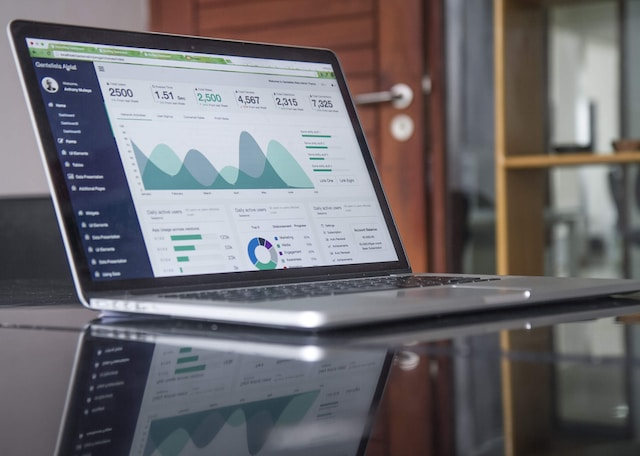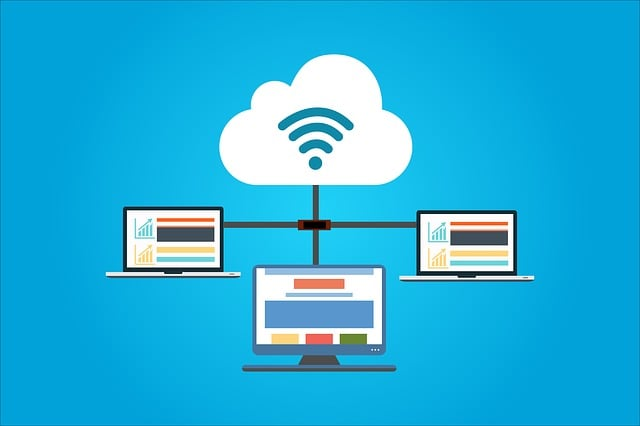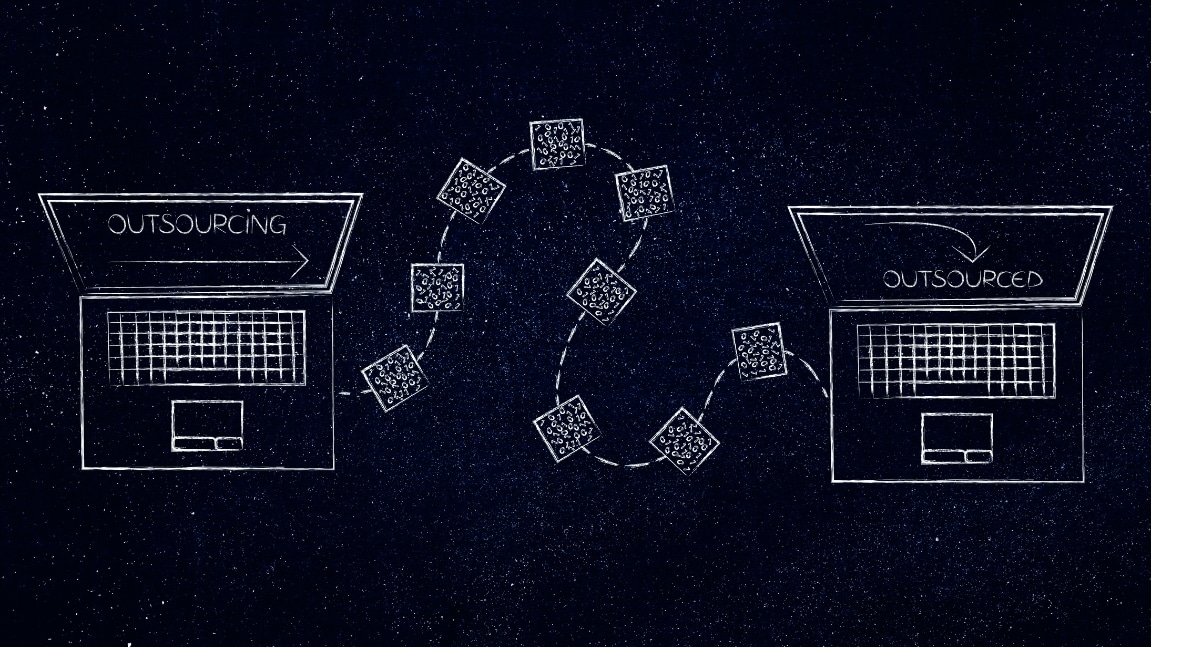In today’s data-driven world, businesses are constantly swimming in a sea of information, seeking the insights that will propel them forward.
Data analytics has emerged as the compass guiding these organizations through the complexities of big data, helping them make informed decisions and stay ahead of the competition.
With the global data analytics outsourcing market valued at a $5.9 billion in 2020, and projected to surge to an astonishing $6.03 billion by 2028, outsourcing data analytics services, is a phenomenon that is transforming industries across the globe.
But what exactly is data analytics outsourcing, and why are businesses turning to external experts to help them navigate this data-driven landscape?
Join us as we dive deeper into this transformative trend, exploring its benefits, challenges, and how it’s reshaping the future of business intelligence.
Let’s dive in!

What is Data Analytics?
At its core, data analytics is the process of examining raw data to uncover meaningful insights, patterns, and market trends.
Think of it as the detective work of the digital age, where data scientists and data analysts sift through vast amounts of information to extract valuable nuggets of knowledge.
This practice involves a combination of statistical analysis, computer programming, data visualization, and domain expertise.
Data analytics can be categorized into several types, including:
- Descriptive Analytics: This type of analytics focuses on summarizing historical data to gain a better understanding of what has happened in the past. It often involves creating reports and dashboards that provide a snapshot of key metrics and market trends.
- Diagnostic Analytics: Diagnostic analytics goes a step further by delving into the reasons behind past events or trends. It helps answer questions like “Why did sales drop last quarter?” by identifying causal relationships within the data.

- Predictive Analytics: Predictive analytics uses historical data and statistical algorithms to forecast future events or trends. For example, it can predict customer churn or demand for a product in the coming months.
- Prescriptive Analytics: This advanced form of analytics not only predicts future outcomes but also suggests specific actions to achieve desired results. It’s like having a data-driven roadmap for decision-making.
Data analytics plays a crucial role in guiding business strategies, improving operational efficiency, enhancing customer experiences, and enabling data-driven decision-making.
With the exponential growth of data in recent years, organizations are increasingly relying on data analytics to gain a competitive edge and stay agile in a rapidly changing business landscape.
Why Outsource Data Analytics?

Great question.
Time, speed, expertise and costs all come to mind here, but let’s explore further.
In a world overflowing with data, outsourcing data analytics has emerged as a strategic move for many businesses.
Here are a few compelling reasons why organizations are turning to external experts to handle their data analytics needs, and why you should consider it too:
- Expertise and Specialization: Outsourcing firms are like data wizards; they have experts who live and breathe data analytics. By partnering with them, you tap into a pool of specialized knowledge and data analytics skills, ensuring that your data is analyzed with precision and accuracy.
- Cost-Savings: Building an in-house data analytics team can be expensive. Outsourcing allows you to leverage data analytics in line with your budget because you only pay for the services you need when you need them. It eliminates the need for hiring, training, and maintaining a full-time team.
- Access to Advanced Tools and Technology: Data analysis requires powerful software and tools. Outsourcing providers are equipped with the latest technologies, saving you the hassle and expense of acquiring and maintaining these resources.

- Scalability: Your data analytics needs can fluctuate over time. Outsourcing allows you to scale up or down easily, adapting to your requirements without the complexities of hiring and firing employees.
- Faster Insights: Outsourcing accelerates the data analysis process. With dedicated teams working on your data, you get insights quicker, enabling faster decision-making and a competitive edge in your industry.
- Focus on Core Competencies: When you outsource data analytics, your internal team can focus on what they do best—your core business operations. This ensures that your resources are optimized for maximum efficiency and effectiveness.
Outsourcing data analytics isn’t just a trend; it’s a strategic move that can boost your organization’s capabilities, save you money, and keep you ahead in the data-driven race.
Whether you’re a small startup or a large corporation, harnessing the power of outsourced data analytics can be a game-changer for your business.
Choosing The Right Outsourcing Partner

Now that we’ve explored the compelling reasons to outsource data analytics, it’s crucial to understand that not all data analytics partners are created equal.
To reap the maximum benefits and ensure a smooth transition into the world of outsourced data analytics, you must choose the right partner.
Here is a roadmap to help you make this vital decision:
- Define Your Objectives: Before even starting the search for a data analytics partner, outline your specific objectives and goals. What do you want to achieve with data analytics? Having a clear vision will guide your selection process.
- Expertise and Experience: Look for a partner with a proven track record in data analytics, especially in your industry. Check for relevant certifications, case studies, and client testimonials to gauge their data analytics expertise and experience. They should, at the very least, have expertise in predictive modeling and machine learning.
- Technology Stack: Ensure that the partner has access to the latest data analytics tools and technologies. Their tech stack should align with your needs, ensuring efficient and effective analysis.
- Data Management, Security, and Compliance: Your outsourcing partner should have a strong command over data cleansing, data integration, and data transformation. Moreover, your partner must adhere to the highest standards of data security and compliance, especially if your industry is subject to strict regulations like healthcare or finance. They should be well-versed in compliance regulations related to data privacy and security, such as GDPR or HIPAA.When evaluating their security measures:
- Establish clear data security guidelines: Clearly define your expectations regarding data security and privacy, and make sure your service provider adheres to them.
- Evaluate the provider’s security protocols: Make sure the provider has implemented robust security measures such as encryption, firewalls, and intrusion detection systems.
- Regularly audit and monitor the provider’s performance: To ensure ongoing data security, conduct periodic audits and assessments of the provider’s security practices and protocols.

- Communication and Collaboration: Effective communication is key to a successful partnership. Choose a partner with a clear communication process and a willingness to collaborate closely with your in-house team.
- Scalability: Consider your future needs. Ensure that the data analytics partner can scale their services as your data analytics requirements grow.
- Cost Transparency: Transparent pricing is essential. Understand the cost structure, including any hidden fees or additional charges, to avoid surprises down the road.
- Data Privacy: Check how the data analytics partner handles data privacy and confidentiality. Ensure that they have robust data protection measures in place.
- Flexibility: A flexible partner can adapt to your changing needs and timelines. Look for a provider who can accommodate your specific requirements.
- Client References: Don’t hesitate to ask for references from their current or past clients. Hearing about others’ experiences can provide valuable insights into what it’s like to work with the data analytics partner.
- Quality Assurance: Inquire about their quality assurance processes. A commitment to quality ensures that the insights you receive are accurate and actionable.
Choosing the right outsourcing partner is a critical step in your data analytics journey. By carefully considering these factors and conducting due diligence, you can forge a partnership that not only meets but exceeds your data analytics needs, propelling your organization to greater success.
The Process of Outsourcing Data Analytics

Outsourcing data analytics may sound complex, but the process can be broken down into straightforward steps. Here’s a simplified overview of how it all works:
Step 1: Identify Your Needs:
The journey begins with identifying what you need from data analytics. Is it understanding customer behavior, improving operations, or making predictions? Knowing your goals is crucial.
Step 2: Search for a Partner:
Next, you’ll look for an outsourcing data analytics partner. Use the criteria mentioned earlier to find a partner that aligns with your objectives, industry, and budget.
Step 3: Data Sharing:
To start the process, you’ll share your data with the data analytics partner. Ensure they have strict security measures in place to protect your information.
Step 4: Data Cleaning and Preparation:
Before analysis can begin, the data needs to be cleaned and prepared. This involves removing errors, duplicates, and ensuring that it’s in a usable format.

Step 5: Data Analysis:
Now comes the exciting part – data analysis! The data analytics partner will use various techniques and tools to find patterns, trends, and insights within your data.
Step 6: Insights and Reports:
Once the analysis is complete, you’ll receive reports and insights. These are like treasure maps, guiding you to valuable information within your data.
Step 7: Feedback and Iteration:
You’ll review the insights and provide feedback. If adjustments or further analysis are needed, the data analytics outsourcing partner will iterate the process until you’re satisfied.
Step 8: Implementation:
After finalizing the insights, it’s time to implement changes in your business based on the findings. This could involve adjusting strategies, processes, or making data-driven decisions.
Remember, the process is a collaborative effort between your organization and the outsourcing partner. By working together, you can unlock the full potential of your data, gaining valuable insights that drive growth and success.
Drawbacks and Solutions of Outsourcing Data Analytics

As you consider outsourcing data analytics, it is important to weigh the drawbacks before making a decision. Offshoring can entail various challenges and risks. However, by identifying these pain points, you can implement suitable solutions.
Drawback 1: Data Security Concerns
Solution: Outsourcing data analytics often involves sharing sensitive and confidential information with external service providers. This exposes your company to potential data breaches and privacy concerns. To mitigate this risk, ensure that your outsourcing partner follows strict security protocols and complies with regulations such as the General Data Protection Regulation (GDPR).
Drawback 2: Loss of Control
Solution: Outsourcing of data analytics functions may have you feeling like you are losing control of a vital part of your organization’s processes. Maintain control by establishing clear communication channels with your outsourcing partner. Regular updates, collaboration, and feedback mechanisms will keep you in the loop and ensure alignment with your goals.
Drawback 3: Change Management
Solution: Integrating an external service provider into your existing work processes could impact team dynamics and necessitate adjustments. Emphasizing the importance of change management can help smooth the transition. Ensure a seamless onboarding process and engage your team in the process to minimize disruptions.
Drawback 4: Cultural and Language Differences
Solution: When offshoring, differences in communication styles, and cultural nuances can hinder collaboration and the understanding of project requirements. One solution is to set clear expectations, establish regular communication channels, and provide training for your data analytics partner.

Drawback 5: Dependency on External Service Providers
Solution: Outsourcing may create a reliance on external providers for critical operations. This can be detrimental if the partnership does not deliver as expected or if they suddenly withdraw their services. To counter this, develop contingency plans and consider incorporating redundant service providers to maintain a stable operation.
Drawback 6: Loss of In-house Expertise
Solution: Over-reliance on outsourcing can lead to a decline in in-house expertise and knowledge base. It’s crucial to maintain a balance between outsourcing and in-house growth. Encourage skill development and invest in internal training programs to retain your company’s expertise.
Drawback 7: Scalability Challenges
Solution: Choose an outsourcing partner capable of scaling their services as your needs grow. Ensure they have the capacity to handle increased data volumes and complexity.
By acknowledging these potential drawbacks and implementing the suggested solutions, you can navigate the world of outsourcing data analytics more effectively, minimizing risks and maximizing the benefits for your organization.
Emerging Trends in Data Analytics Outsourcing

When exploring data analytics outsourcing, it’s vital to keep up with the latest trends in this fast-changing field. These trends can transform how organizations use data analytics and open new growth opportunities.
- AI-Powered Automation: AI-driven automation and machine learning (ML) is streamlining data analytics processes. From data collection and cleansing to pattern recognition, AI accelerates the analytics workflow, enabling organizations to derive insights faster and with greater accuracy.
- Real-time Analytics: The demand for real-time data analytics is growing. Businesses are increasingly looking for immediate insights to make quick decisions. For instance, industries like e-commerce and finance rely on real-time analytics to personalize customer experiences and detect fraudulent activities.
- Cloud-Based Analytics: Cloud computing is reshaping the data analytics landscape. Cloud-based analytics platforms offer scalability, flexibility, and cost-efficiency. According to Statista, the global cloud analytics market is projected to reach $84.24 billion by 2026.

- Advanced Data Visualization: Data visualization tools are becoming more sophisticated, making it easier for non-technical users to interpret complex data. Interactive dashboards and intuitive visualizations empower decision-makers to extract insights from data more effectively.
- Industry-Specific Solutions: Outsourcing providers are developing industry-specific analytics solutions. These tailored offerings cater to the unique needs of various sectors, such as healthcare, retail, and manufacturing, allowing businesses to derive highly relevant insights.
- Predictive and Prescriptive Analytics: There is a growing emphasis on predictive and prescriptive analytics. These techniques not only forecast future trends but also recommend specific actions to achieve desired outcomes. By 2027, the global predictive analytics market is estimated to reach $23.5 billion, according to Market Research Future.
- Data Ethics and Bias Mitigation: As the ethical use of data gains importance, organizations are implementing measures to mitigate bias in analytics models. Ethical data practices are crucial for maintaining trust with customers and stakeholders.
These emerging trends in data analytics outsourcing reflect the industry’s continuous evolution. To stay competitive, organizations must adapt to these changes and leverage the latest technologies and strategies to harness the full potential of their data.
Get more insight on modern data analysis here:
Final Thoughts

In the ever-evolving landscape of data analytics outsourcing, staying ahead means embracing change and innovation.
As we’ve seen, emerging trends like augmented analytics, real-time insights, and industry-specific solutions are reshaping the way organizations utilize data and are allowing them to create a robust data analytics process.
By tapping into these trends and partnering with trusted outsourcing providers, your business can unlock a world of possibilities. You can make smarter decisions, enhance customer experiences, and gain a competitive edge in a data-driven world.
Remember, data analytics outsourcing isn’t just a strategy for today—it’s an investment in your future success. As you navigate this dynamic field, stay informed, stay flexible, and always keep your business goals at the forefront. With the right approach and the right partners, you can harness the power of data to drive growth and propel your organization into a brighter tomorrow.
Frequently Asked Questions
What are the benefits of outsourcing data analytics?
Outsourcing data analytics presents a competitive advantage for your business. You gain access to top talent in the field, which enables you to receive valuable insights without investing in hiring and training new employees. It can also be cost-effective and can offer a wide range of options from different service providers. Furthermore, it improves efficiency and scalability since the outsourcing company can handle a diverse workload that can adapt to your company’s needs.
How to choose the right data analytics outsourcing company?
To choose the right data analytics outsourcing company, you should first define your goals and the scope of work you need. Then, research companies with a solid track record and expertise in the specific area of data analytics you require. Look for references or case studies that demonstrate their competency. Discuss their pricing models, and always evaluate communication and project management skills to ensure a smooth working relationship.
What are the risks involved in outsourcing data analytics?
Some risks associated with outsourcing data analytics include data security concerns, miscommunication, and a possible lack of control over the quality of the work delivered. These risks can be mitigated by carefully selecting a reputable service provider, establishing clear communication channels, and setting up proper security measures for data sharing.
What industries commonly outsource data analytics?
Various industries benefit from outsourcing data analytics, such as healthcare, finance, retail, e-commerce, and manufacturing. These sectors generate a massive amount of data, and they require insights to make informed decisions and stay competitive. The demand for data analytics outsourcing continues to grow as companies seek to leverage the full potential of their data.
What is the future of the data analytics outsourcing market?
The data analytics outsourcing market is projected to keep growing in the upcoming years as companies increasingly recognize its benefits and become more data-driven. Advancements in technology such as artificial intelligence, machine learning, and big data tools will further enhance the capabilities of outsourcing service providers.











